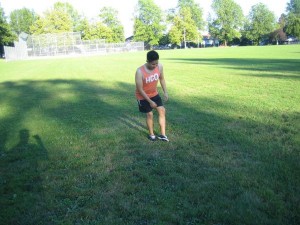A pulled groin or strain basically speak of an overly stretched muscle or tear to any of the adductor muscles that traverse down the interior of the thigh as well as responsible for pulling the legs in unison. It is important to note that the adductor longus muscle is considered as the commonly affected typically at the site where the muscle inserts on the femur or thigh bone.
It is important to note that sports that involve a lot of direction changes during kicking, running as well as quick acceleration, are more likely to trigger a pulled groin in some individuals. Even twisting or falling abruptly during daily activities can also lead to injury. If you want learn more about first aid management for a pulled groin, all you have to do is to register for first aid training today.
Steps in dealing with a pulled groin

You can perform the following measures if you suspect an individual with a pulled groin. These must be carried out as soon as possible to prevent the injury from worsening as well as start the healing process.
- The affected leg must be allowed to rest. Always bear in mind that a pulled groin requires time to heal properly after an injury. The individual should avoid any athletic activity until the pain completely vanishes. In most cases, the doctor will prescribe crutches that the individual should use in order to prevent the affected leg from bearing weight.
- Apply ice on the affected groin. Take note that ice helps reduce the inflammation linked with a pulled groin which instigates both pain and limits the ability of the muscles to heal. Ice should be applied for 20 minutes at a time at several times in a day with a barrier in between the skin and ice. An ice massage can be performed after the first few days.
- Apply a compression bandage in order to reduce the swelling and provide the leg with adequate support. All you have to do is to wrap an elastic bandage around the affected thigh, particularly when the individual is mobile.
- The affected leg should be elevated when the individual is lying down or resting. The injured area should be raised higher than the level of the heart to reduce the risk of swelling.
- Exercises can be resumed at a steady manner once the pain subsides. It is best to start with low impact activity and work steadily to high-impact activities. The individual should start with jogging in chest-high water and followed with swimming and then resuming land exercises.
Important considerations to bear in mind
It is vital to consult a doctor before treating any medical conditions. Certain medications such as naproxen and ibuprofen can be useful for those who are experiencing high levels of pain as well as swelling with the pulled groin.
